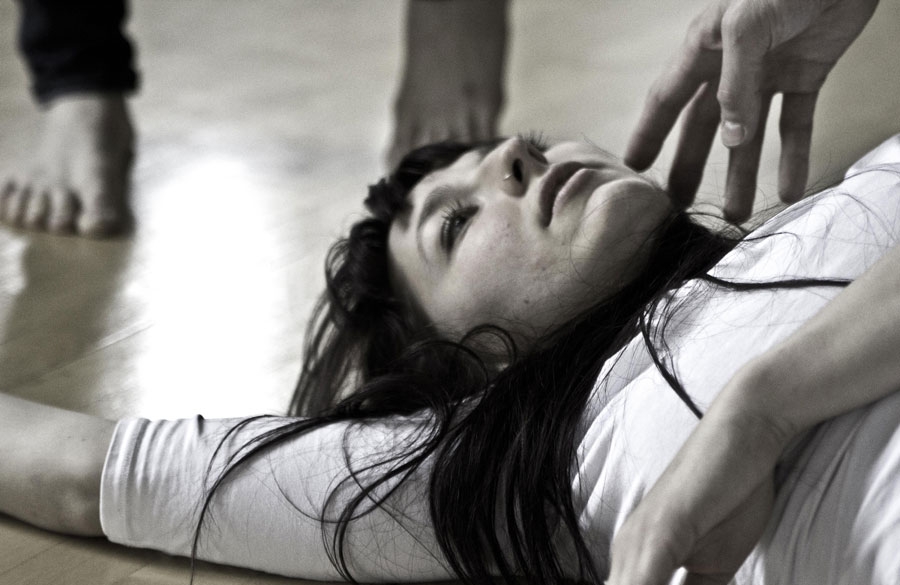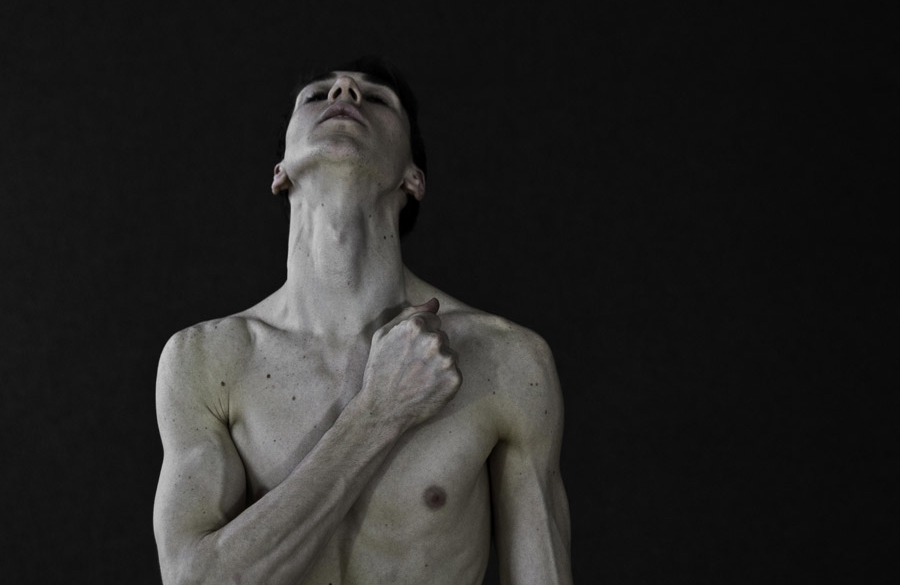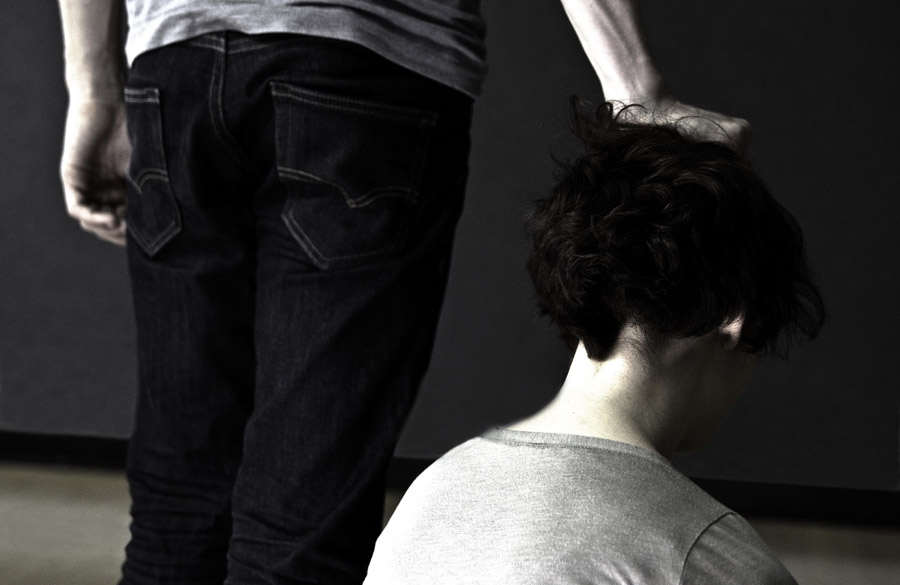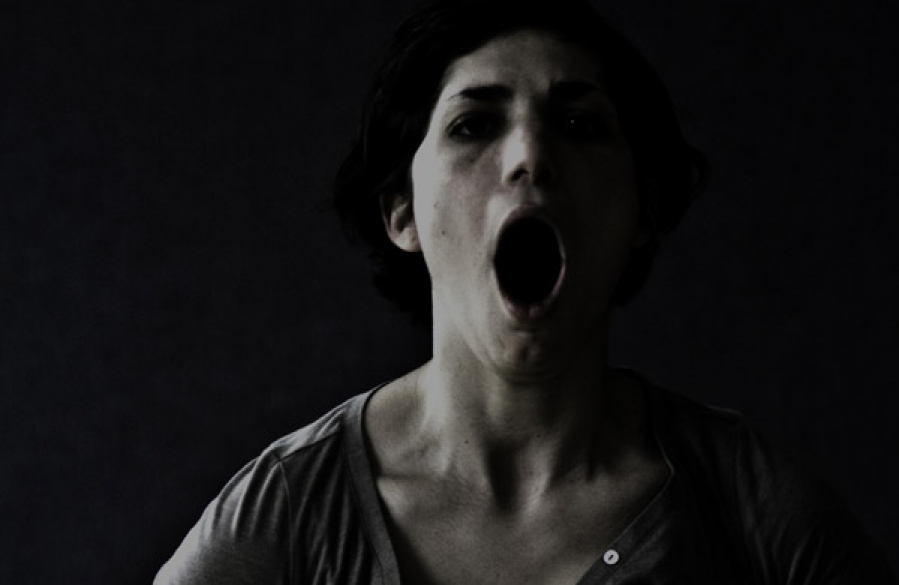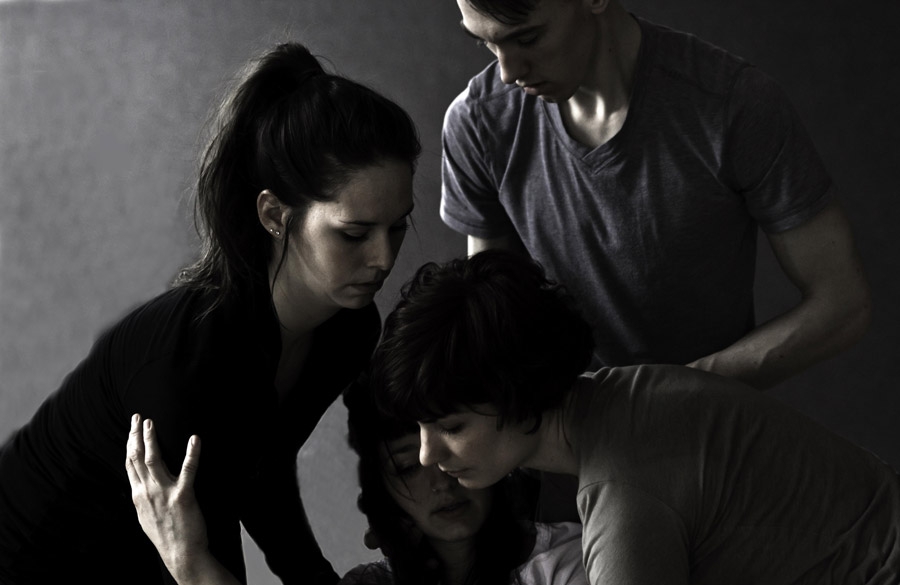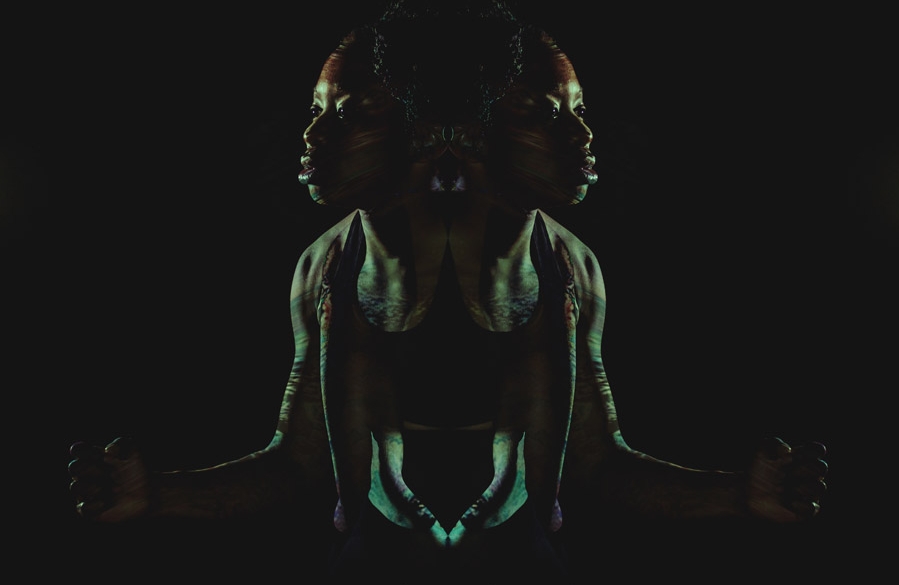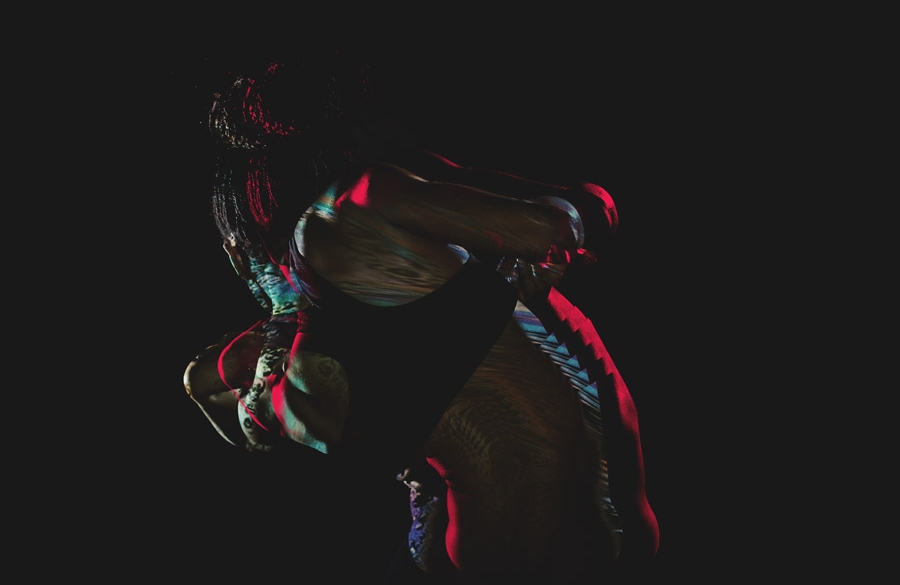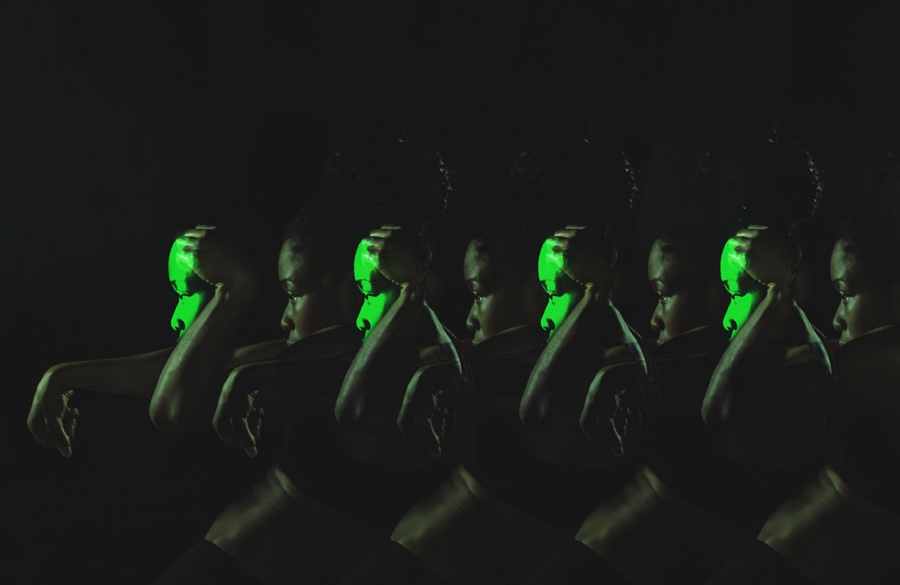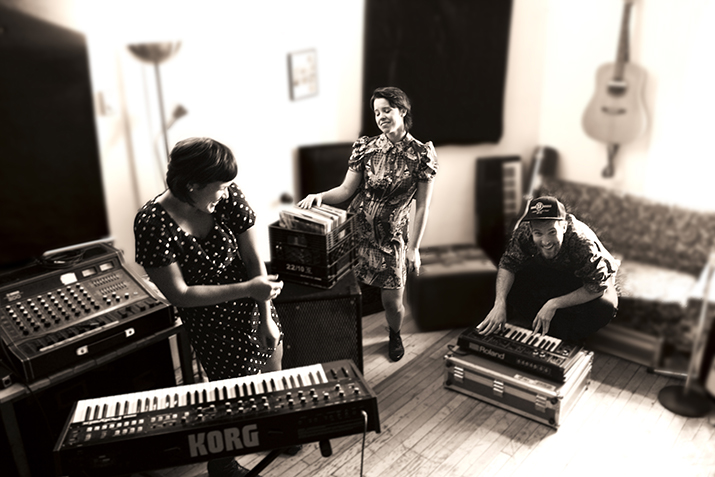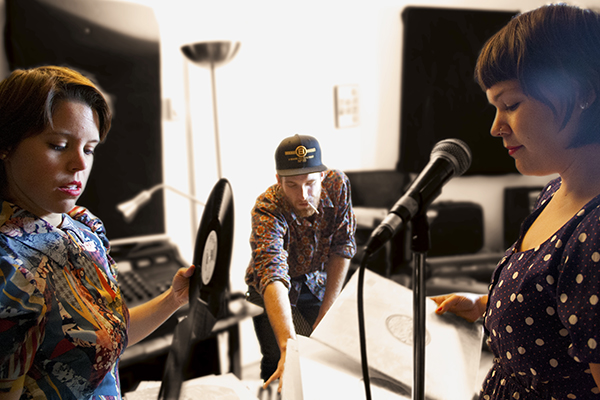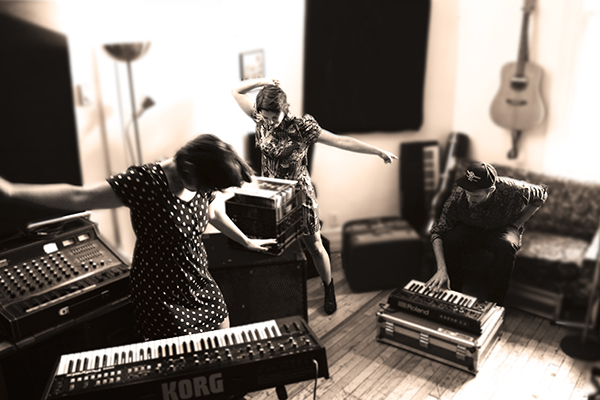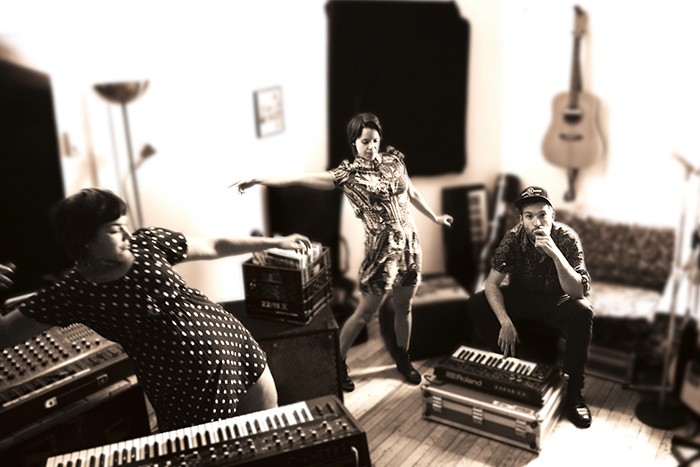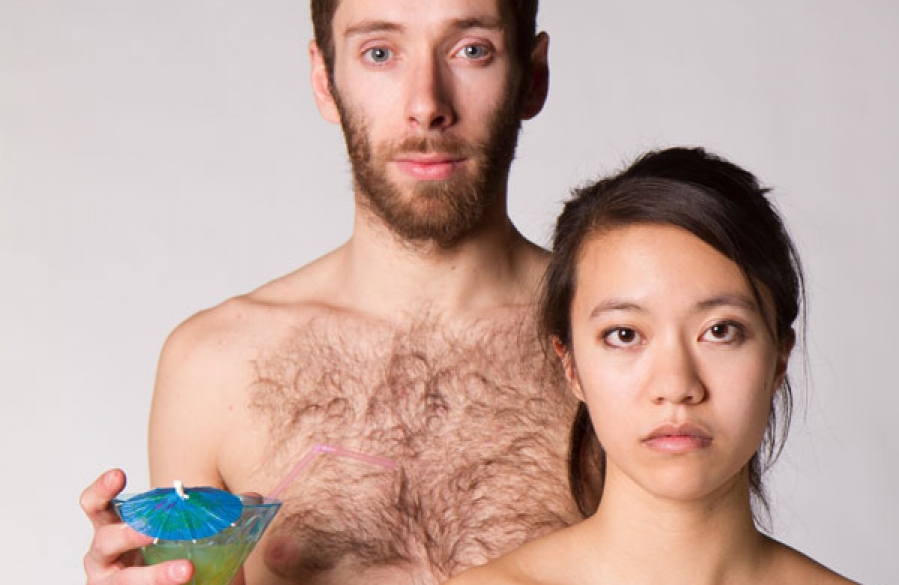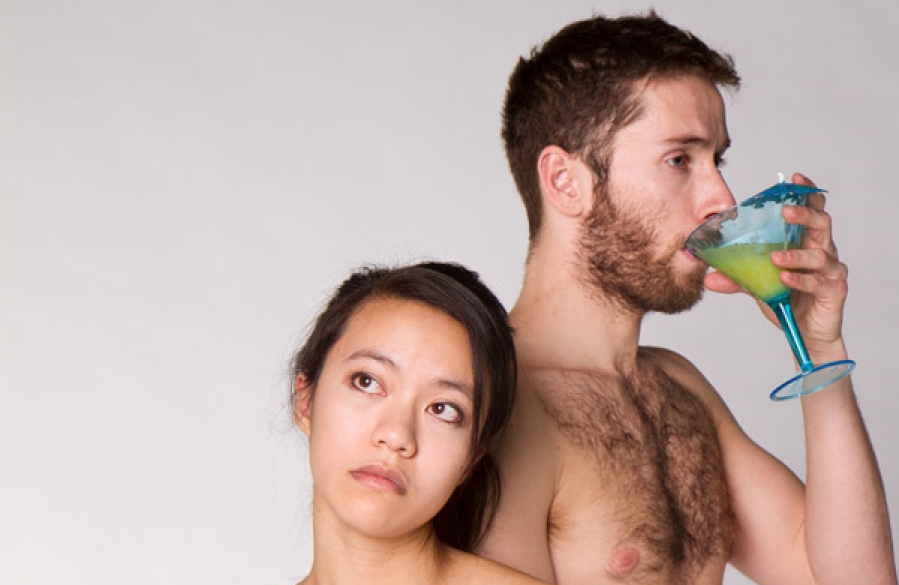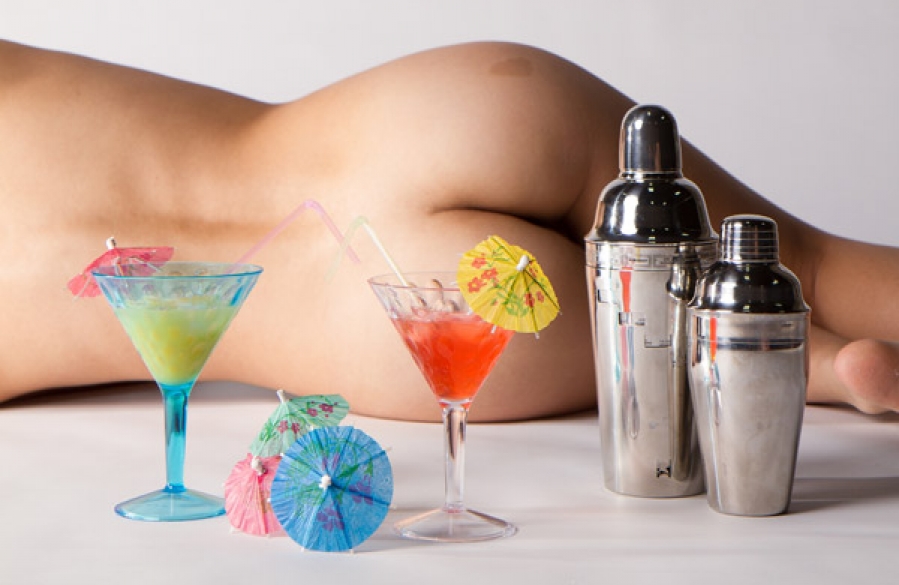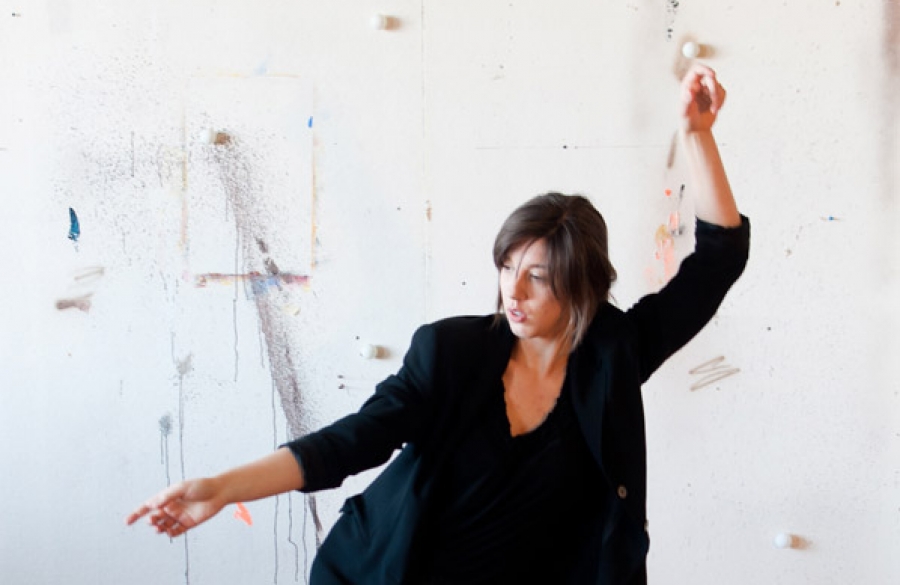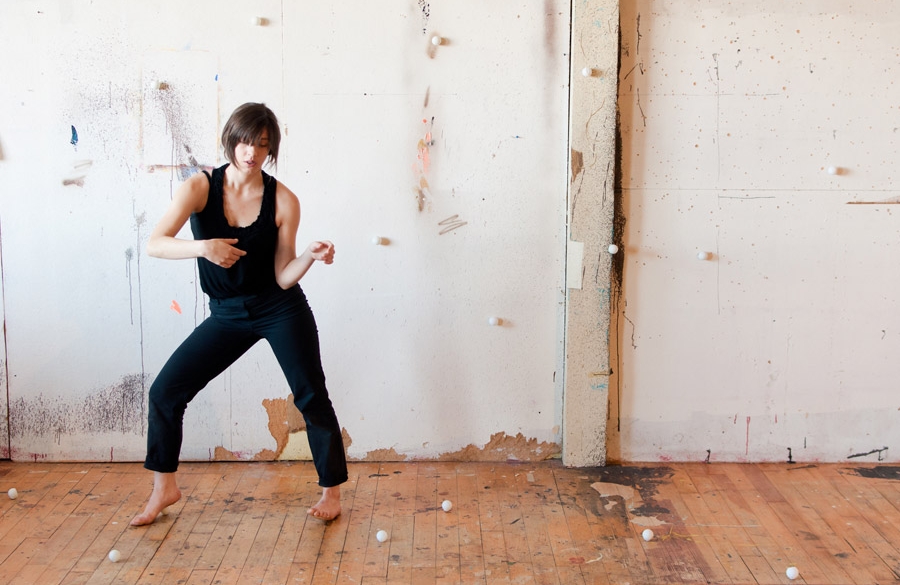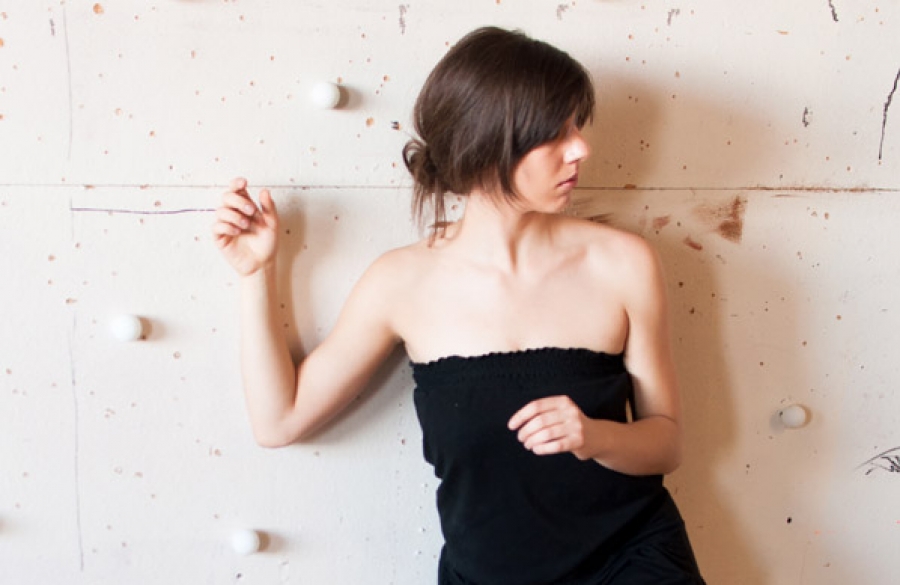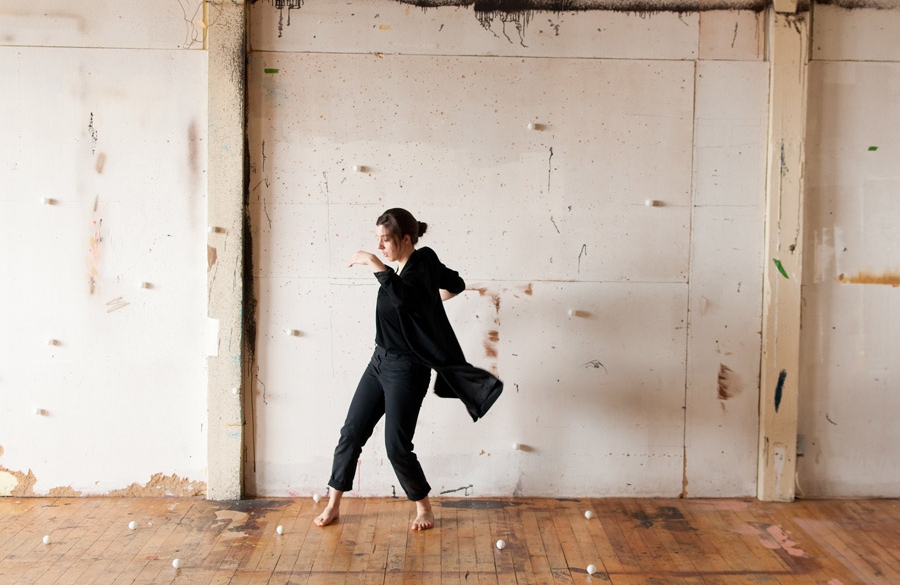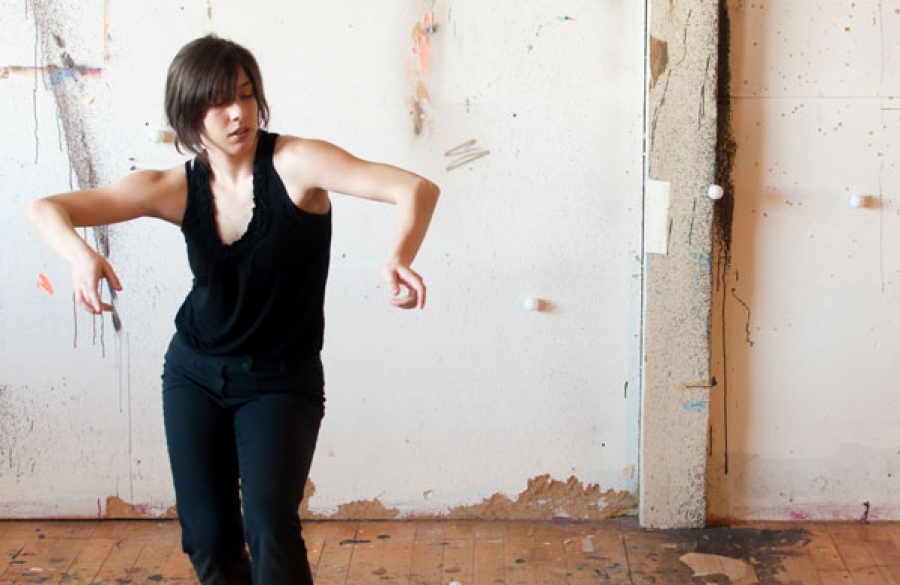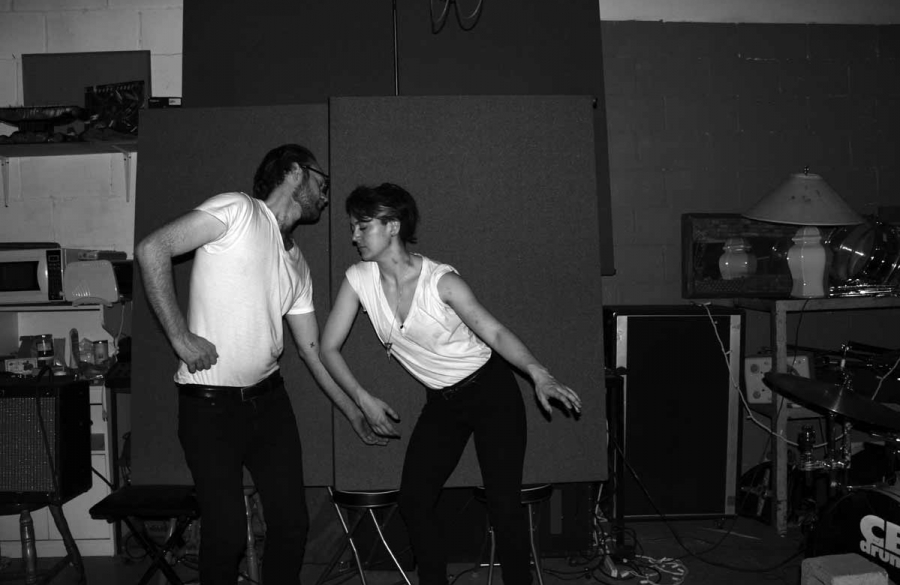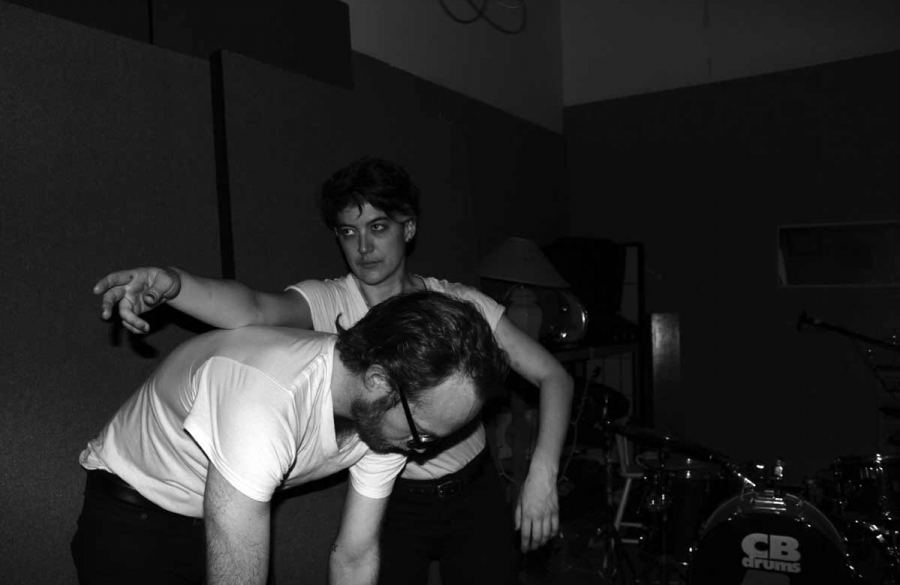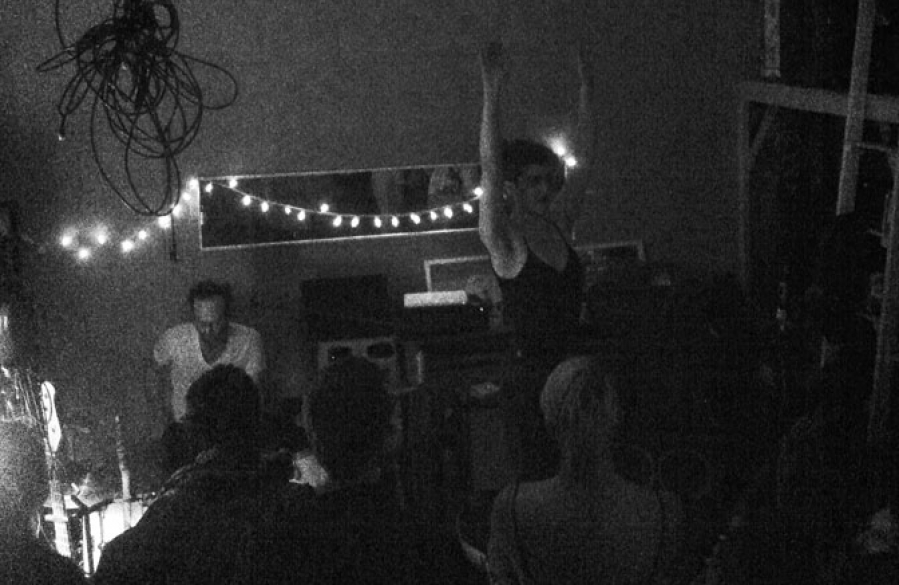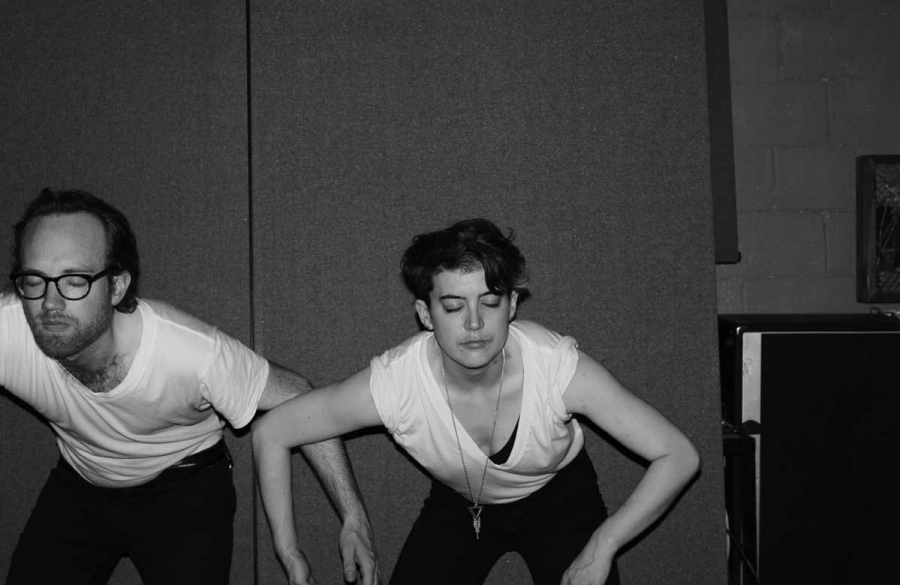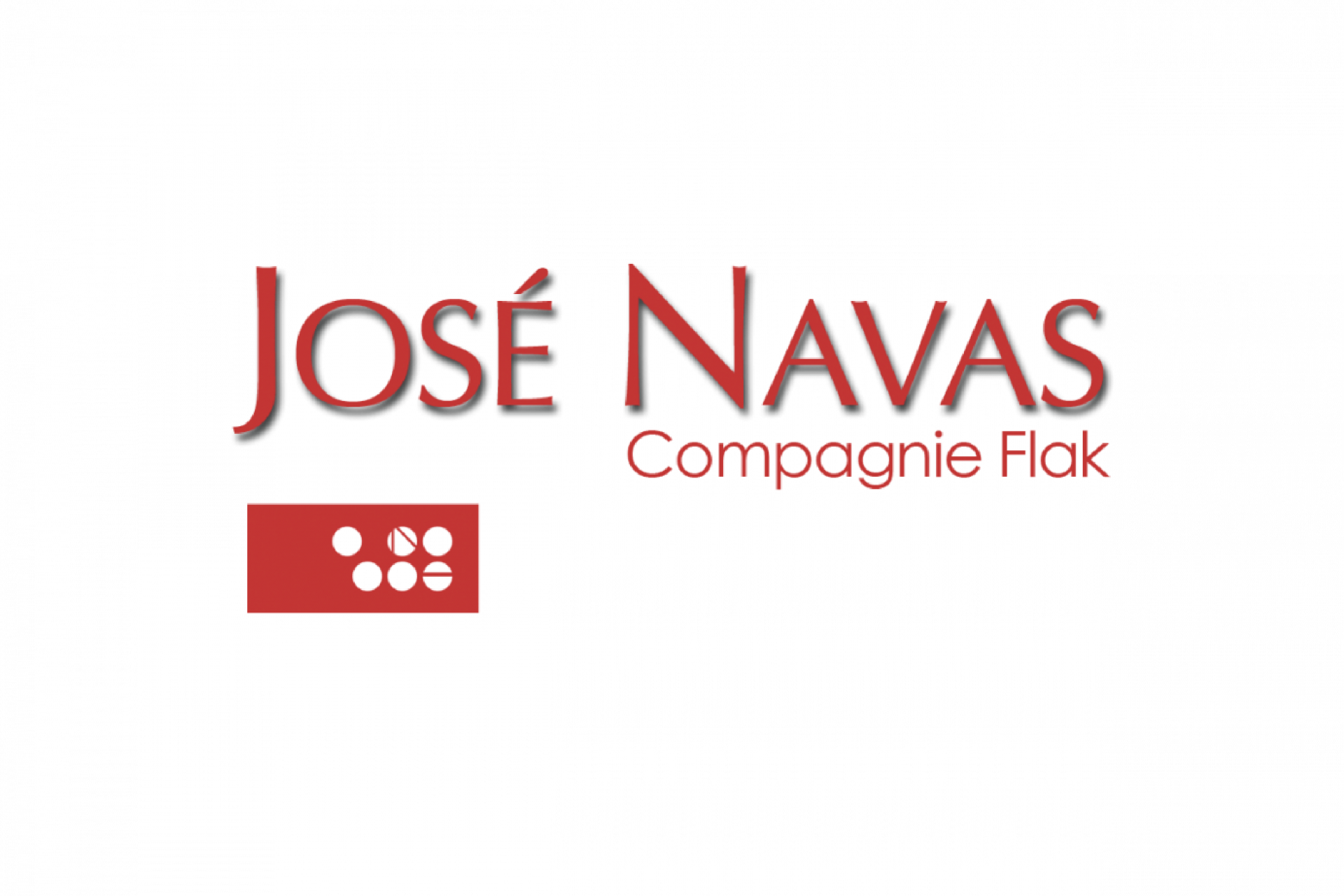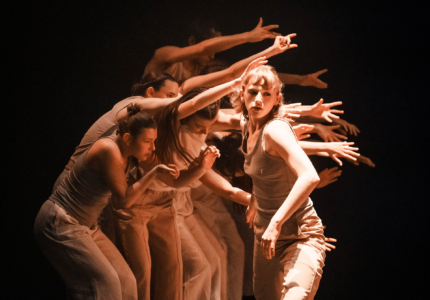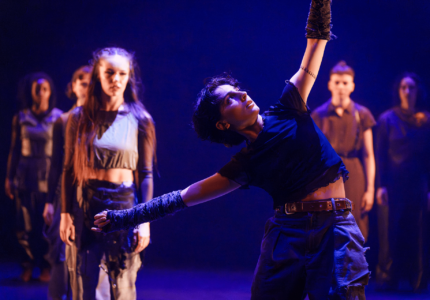Danses buissonnières classe 2013
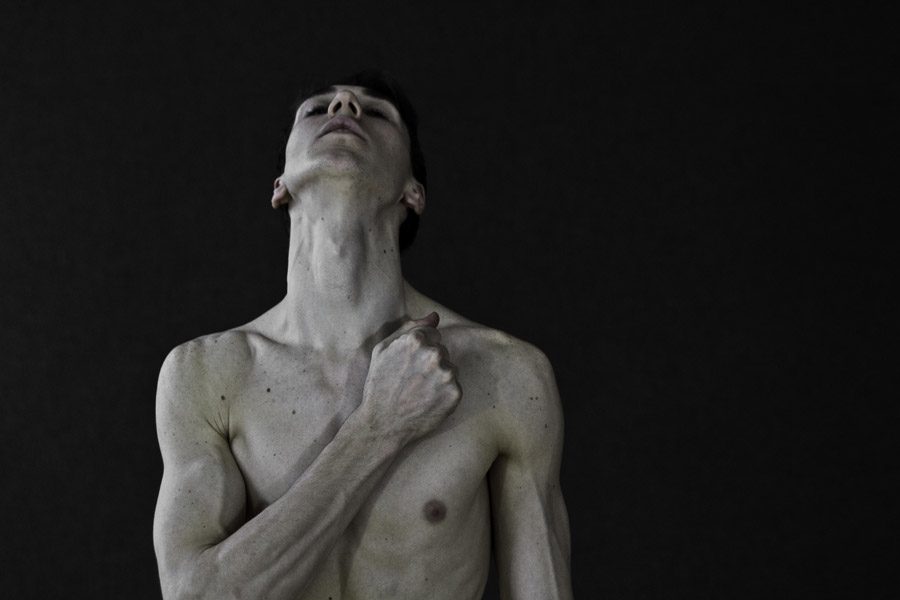
DECEMBER 12. 13. 14, 2013 | 7:30PM
DECEMBER 15, 2013 | 4PM
Julia Barrette-Laperrière
4 morts
Partly inspired by Jérôme Bel slowly dying on the song “Killing Me Softly”, this choreographic essay talks about death and puts forth the numerous taboos surrounding this thematic in our society. The piece, divided in four very distinct sections, evokes through metaphors four different ways of passing away, from the most violent to the softest.
Choreographer : Julia Barrette-Laperrière
Performers : Marijoe Foucher, Marika Milani, Sébastien Provencher, Hannah Roirant
Artistic advicer : Manon Oligny
Music : Mourir sur scène – Dalida, Le Cygne – Camille Saint-Saëns
Julia Barrette-Laperrière
Julia Barrette-Laperrière began to dance at Saint-Laurent College and continued her formation at University of Quebec in Montreal (UQAM). Within her formation, she got to dance as an interpreter in Tableau de chasse for Manon Oligny and Crematorium for Philippe Dandonneau, both presented at l’Agora de la Danse. As a choreographer, she first created, with the support of Passerelle 840, the piece Let’s get it on!, that was later presented at l’Arrêt de Bus and at Maison de la Culture Villeray in the spring of 2013. Julia also enriches her career path by collaborating with circus and theatre artists, which brought her to perform in Mexico with the circus collective Las Güeras, where they were invited artists to the 15e Festival de Mayo, in Guadalajara.
Marijoe Foucher
Marijoe has graduated from UQAM as a contemporary dancer. As a student, she had the opportunity to work very unique dance language with Manon Oligny and Sylvain Émard. Furthermore, she participated in many artistic projects with young choreographers, which gave her the occasion to perform at the Fringe Festival (2012), Festival Vue sur la rélève (2013) and also at L’Arrêt de bus (2012-2013). Moreover, Marijoe joint the project in situ of Emmanuel Jouthe «Écoute pour voir». Through her way, she explored the role of assistant producer and she put her heart into many creative processes. Marijoe wishes to use this art to share a sensitivity and an energy lead by the imaginary and the instinct.
Marika Milani
Marika Milani began to dance at Sherbrooke college and she continued her formation at University of Quebec in Montreal. She worked in collaboration with two invited choreographers for the students dance show at UQAM, Manon Oligny and Sylvain Emard. In 2010, she worked with Emmanuel Jouthe for the first part of his show Cinq humeur, in Sherbrooke city, and one of his projects called Écoute pour voir, for the week of dance in Montreal, in 2012.
Hannah Roirant
Coming from a classical background in France, Hannah graduates as a choreographer from UQAM in spring 2013, presenting her work, AGATHA, at l’Agora de la danse. As an interpreter, she has taken part to the work of Manon Oligny, and recently started performing with the Blue Light Burlesque at Café Cléopâtre and Cabaret Chez Mado, in addition to working with the Delina Rossa theatre company.
Sébastien Provencher
At 21 years old, while doing a degree in occupational therapy at the Université de Montréal, Sebastien discovers contemporary dance in classes taught by choreographer Erin Flynn. After a year of full time job in occupation therapy, Sebastien decides to go back to school to complete a degree in contemporary dance at the Université du Québec à Montréal (UQÀM) in 2013. After his graduation, Sebastien works for a lot of choreographers like Emmanuel Jouthe, Manon Oligny and Andrée-Anne Ratthée. While doing his formation at l’UQÀM, Sébastien discovers an interest for the creation. His first piece called Enactive Mind (2012) was selected to be presented in Lyon at the Festival universitaire international de danse et des arts du mouvement.
A year ago, I left to go study dance in Mexico. During that exchange, I lived an intense cultural immersion and witnessed that over there, the dead would accompany the living and be part of everyday life. Coming back to Montreal, the silence and taboo surrounding death here suddenly became so obvious and overexposed, compared to the mexican attitude, that I felt the urge to experiment on the subject in my choreographic work.
Indeed, I often start from a thematic to create. One of my goals is to make contemporary dance more accessible. In that train of thought, I conceive rather narrative pieces, basing myself on the dance-theater mix, on character construction, as well as on images with high symbolism. I like to expose stereotypes and taboos and I think that art exists partly to help take them down. I also like using my interpreter’s backgrounds and personal experiences, to work with their individuality, and they gave back a lot in 4 DEATHS by highly contributing to the construction of each of the deaths I had imagined for them.
Alex-Ann Boucher
Simon says
C’est la victime et le promoteur à la fois.
C’est la course contre soi.
C’est le dépassement qui promet.
C’est l’accomplissement personnel.
C’est la productivité nécessaire.
C’est l’oubli de soi.
C’est la tête sans son corps et le corps sans sa tête.
C’est le soi avare de, dépendant de.
C’est l’énergie déployée, dépensée, consommée.
C’est le tout à gagner.
C’est le tout à perdre.
C’est le jeu.
C’est le piège.
Wanna play that game?
You’re already playing it.
Choreographer : Alex-Ann Boucher
Performers : Christina Paquette, Sébastien Provencher, Marie Duval, Marie-Reine Kabasha, Marie-Philippe Santerre
External eye : Geneviève Bordeleau
Alex-Ann Boucher
Alex-Ann Boucher studied theater up until college before beginning studies in dance at the Cégep de Sherbrooke and moving forward to l’UQAM for her bachelor’s degree. She decides to refocus on dance due to the multitude of possibilities it offers through which she completely relearned her perception of performing is all about. Freeing the body from speech so that it can, itself, make a stance through its different states. In her work, she addresses isolation, productivity and pressure in the various relationships between individuals and communities. She creates paintings rich in tension utilizing enclosed spaces and working on notions or urgency and repetition to allow the sought-after body states to sincerely emerge. Alex-Ann chose dance because she wonders about this body we believe is “ours”, but that requires such particular functionality and a necessary productivity. Do we really have full freedom of this body, with this body? For this project, she is working with five performers with whom she studied at l’UQAM.
Research work on the “executing” body which responds to very specific commands. Principle of “task” for the performer to accomplish, utilization of bodies for their functionalities. What is interesting here is what results from this device, for both the performer and viewer. Explore what is generated by a uniformity of the bodies, a growing demand for performance and a true exhaustion. Work to seek a maximum investment from the performer on all levels, and a search to exceed personal limits in order to work within the gap that reaching this limit allowed. Work to adjust the devices (physicals, psychological, spatial, temporal, etc.) in order to remain in discomfort in order to avoid illusion (typical to virtuosity). Working as an interpreter to really wear the themes of productivity and efficacy; develop a system and undergo this same system.
Vanessa Bousquet
Échantillon
By exploring different conceptions of musical pulse and investigating the physical sensations it evokes, Échantillon presents a unique relationship in time and space between two dancers. Its unique choreographic vocabulary seeks to examine the different ways the body can respond to and interact with pulsation. Can be by a quality fully responsive to the internal and intuitive pulses of performers or by an external source also. The composition shows a surreal, full of femininity and completely captivating relationship between the two characters. The phenomenon of pulse is present in both music and dance. Échantillon attempts to return to the source of that shared sensation as well as questioning the concept of grooving, an enigmatic state that defies precise definition, despite being frequently experienced and shared.
Choreographer : Vanessa Bousquet
Performers : Vanessa Bousquet et Laurence Ogagnon
Composer and music performance : Félix Petit
Artistic advices : Marie-Pier Bazinet
Costumes : Marie-Laurence Rock
This project has been supported by the “Programme d’aide aux artistes en danse du Département de danse de l’Université du Québec à Montréal” and was also offered a creation residency by Concordia University.
Vanessa Bousquet
Vanessa Bousquet graduated from the dance department of the Cégep de Drummondville in 2006 and from Concordia University in 2009 with a BFA in Contemporary Dance. During her BFA, she was a part of several artistic projects with the collective Ionic Space and the multidisciplinary artist Shermine Sawalha. Co-founder of the dance company Bordels Associés, she presented Congestion artérielle à l’index (2009) at Tangente during The St-Ambroise Montreal Fringe Festival. She participated in the event Zone Homa in 2010 with her own work Pulsation Corrigée at Maison de la culture Maisonneuve. She has worked as a dancer for Élise Bergeron, Marie-Pier Bazinet and Théâtre Omnivore. Vanessa is working with Atypique – Le Collectif. Most recent creations Intento (Nacho Libre) and Question d’aplomb (Festival Quartiers Danses, 2012) have received extremely positives reviews. After receiving a second degree in the management of cultural organizations (HEC Montréal), Vanessa began working as a project coordinator for Espace Libre and La 2e Porte à Gauche.
Laurence Ogagnon
Laurence Ogagnon graduated from the dance department of the Cégep de Drummondville in 2007. She received first place for her solo at the festival Danse Encore in 2007 and as well in 2011 at the Festival de Danse de Québec. She graduated in 2010 from UQAM with a BFA in Dance. Following this Laurence participated in an intensive contact improvisation workshop with Andrew De Lotbinière and performed Blanche-Neige, Pas selon Disney by Manon Oligny. She collaborated with the choreographer Marie-Pier Bazinet for Zone Homa in 2011 and is currently working with the choreographer Vanessa Bousquet.
Félix Petit
Félix Petit also known under the name FELP works in general around sound. Machine, Sax, Pads, &/or everything susceptible to produce sound. He deforms, reforms, cuts and puts together in the idea of proposing a particular sound material. Félix recently graduated from Université de Montréal (2012) in saxophone jazz and he is actually reconnecting with his old demons (hip-hop, ambiant, groove, soul). Actual member of Les Guerres de l’Amour, Félix evolves through his own project FELP and was member of JMC Project. He is collaborating with dance project, in particular with Atypique – Le Collectif (Question d’aplomb with Louis Beaudoin de la Sablonnière) and with the choreographer Marie-Pier Bazinet in Géométrie pour corps et movement.
I love the raw energy of dance. That entity which is transmitted, without filter, to the public, charged with feeling and emotion. Through my choreographies, I work the body in rhythm, impressions, sensations, volumes, and relationship with space and with others, all within the context of a fixed constraint. With Échantillon I delighted in letting impulsive and intuitive movement explode from our bodies; to let them groove. The body’s relationship to pulse was the starting point for defining precise positions and for the methodical rhythmic examination of gesture. The work alternates between moments of highly perfected movement performed in unison and periods where the two bodies respond each in their own natural way to the groove they feel, thereby playing with the viewer’s perception of the musical pulse.
Claudia Chan Tak & Louis-Elyan Martin
Tout nu tout cru : 5 à 7 nudiste. Deux danseurs qui voulaient faire du nu
This duet presents a man and a woman’s nudity. There is no room for either embarrassment nor indecency. Everything is justified through the simple of exhibition. Witness of this total striptease, the audience have the option to stare wherever, will they be surprised, will they hate it or like it?
Choreography, performers, costumes and soundtrack : Claudia Chan Tak & Louis-Elyan Martin
Rehearsal director : Anne Le Beau
Tout nu tout cru : 5 à 7 nudiste, deux danseurs qui voulaient faire du nu benefited Programme d’aide aux artistes en danse of the Département de danse de l’Université du Québec à Montréal, as well as a residency offered by École de danse contemporaine de Montréal.
Claudia Chan Tak
Multidisciplinary artist, Claudia Chan Tak gets involved in dance, performance and video for a few years now. Her studies are great proof of the interest she has for Arts, she graduated in intermedia and cyberarts from Concordia University with distinction, then from Université du Québec à Montréal in contemporary dance where she was awarded with the William Douglas scholarship. Through her projects, Claudia Chan Tak confirms her personal signature, exploring playfulness, animal world, in-situ, but also the possibility for dance to become documentary, an idea she is working on in her upcoming thesis in creation.
Louis-Elyan Martin
Louis-Elyan Martin comes from France, eager to pursue his passion for dance, he starts a professional training at l’École de Danse Contemporaine de Montréal, and graduates in 2012. In 2011 while in Tel-Aviv, Israel, he is initiated to the GaGa technique with the Batsheva Dance Company, Ohad Naharin, and starts to develop a real interest for this body language. Throughout his artistic growth he gets closer to dance theatre and performance art, which he especially affectionates. In August 2012, he joins the company O Vertigo. He also works with independant choreographers such as Claudia Chan Tak.
If nudity is that common in contemporary dance, why did we never dance in the nude?
This is the question Claudia Chan Tak and Louis-Elyan Martin, two young graduates in contemporary dance, ask themselves. Together, they frequently discuss about their wish to perform naked on stage and their need to offer their bodies to an artistic aim worth the trouble. While waiting for such a project, they create this duet questioning the relationship between the naked dancer, the audience reception and the contemporary dance scene in general.
Ariane Dubé-Lavigne
Se bercer dans la vase
Is it the birth of enslavement or his decomposition? Is it the body shivering or is it the air around him simmering? The skin is becoming an imaginary frontier moving on the uncertain rhythm of the rising idea, of his stammering. The movement is embodying a clumsy speech, prisoner of the definitions. From the inside of the body, some are fighting to repulse his contours because they are million to live in it, to shake it, to break it down, to suspend it: smooth relentlessness to release oneself of time and space.
Choreographer and performer : Ariane Dubé-Lavigne
Ariane Dubé-Lavigne
Graduated from L’École de danse de Québec in 2010, Ariane danced for choreographer Mario Veillette in his piece Père et mère presented in spring 2011 by La Rotonde. She has also been involved in an in situ piece by Marie-Ève Farmer named Les Ponts Vibrants wich has been presented in fall 2012. Ariane also worked with Lenka Novenka for her installation Fragments of light: I’ve been looking for you and participated as an extra for a curation by Lynda Gaudreau at Leonard and Bina Ellen galery. As a choreographer, Ariane created the piece Colt 45, a duet presented in january 2011 at studio 303 as part of the event In the Round. Ariane is following workshops on a regular basis and is still involved in Mario Veillette’s projects.
-To collect obsessions. ( voices, texts, matters )
-To put them into space. ( on one side, on the other )
-To put the body into space and to try to forget his weakness.
-To accept his weakness.
-To make bad choices.
-To think art is useless and drop everything down.
-To think art is the only worthy thing.
-To want to do something beautiful.
-To find this is boring.
-To want to do something real.
-To write.
-To read.
-To sweat.
-To sit down and look up at the ceiling.
-To write.
-To read.
-To sweat.
-To shiver in the mud.
-To shiver.
-To shiver until rocking oneself in the mud.
-To start again.
Claire Lyke & Shaun Weadick
Enough
Two people with their drum kit, guitar, amp, cables and microphones create and delineate spaces. They use the rearrangement and reiteration of familiar objects, bodies and sounds to embrace transgression. In enough Claire and Shaun open up a song to show off dance living inside its emotional and rhythmic reality. They generate a specific interlocking of space and time. Minimal and simple, this work draws the audience into a world where the seen and heard are in dialogue with the silent and invisible.
Choreographer, dancer, musician : Claire Lyke
Composer, musician : Shaun Weadick
Claire Lyke
Claire Lyke grew up in London, Ontario near the Thames River. In 2004 she came to Montreal to study History at McGill University. Claire took a detour away from her Ballet background to find a home in the Professional and Artistic Training Program in African Dance (PEFAPDA) with Zab Maboungou. She teaches weekly Queer Dance Classes where she works on creating an anti-oppressive, queer, gloriously fun dance space. Claire is currently completing her M.Sc. in Social and Transcultural Psychiatry at McGill University where she researches with youth about Hip Hop and dance.
Shaun Weadick
Shaun Weadick grew up in Kitchener, Ontario near the Grand River. In 2005 he followed love down the 401 to Montréal. He has been in bands since high school playing country, rock, folk, noise, punk, and more. He is a multi-instrumentalist and music instructor. Shaun is currently completing his M.Sc. in Geography, Planning, and Environment at Concordia University where he looks at backyard gardening in Parc Extension, gentrification, and the politics (and injustices) of property.
Shaun and Claire, as Loosestrife, released their first EP enough in the summer of 2013.
Loosestrife is Claire and Shaun. They play music with drums, guitar, and voice. The band’s music links mundane moments to the never-ending struggles we need to keep at. The dance performances hover in the shady space between emotions that are too big for our physical frames, the queer politics of being in particular bodies and the physical imprints of our memories. Loosestrife takes you to the tangible moments when your hand brushes across the back of your crush or you hear helicopters fly over head during a demo or the less discrete sensations of suspension in front of big decisions.
Shaun and Claire start the process of making by talking about their days and talking about their feelings. They then morph these talks into sound and motion with their bodies, drums, and guitar. It/Shit gets sweaty.

